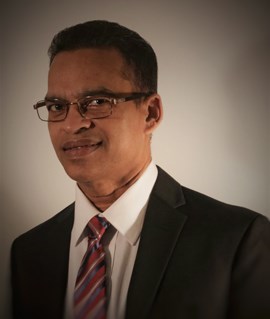Is it possible that people who have not learned to say “no” but are accustomed to saying “yes” are taken for granted? Would it also be safe to say that these people, who can’t seem to say “no” are usually abused by other people?
Phillips had to live with this reality all his life because he seemed to be working at a job he detested and for people who he internally disliked ‘cause he never said “no” to anyone.
A new person was hired. Phillips observed that the new hire demonstrated confident and knew how to say “no” without any guilt feeling.
Phillips took a workshop to improve his self-esteem and self-confidence which helped develop a strong belief in his abilities and judgment. Eventually, everyone noticed a change in Phillips because he was no longer the “yes” person they knew. Phillips learned the skill of knowing when to say “yes” and accept to do something and when to say “no”, which improved his relationship with everyone in his work and private life.
What Does Self-Confidence Mean To You?
For successful people, the role of self-confidence plays an extremely important role in their everyday lives. It allows someone to reach realistic goals. You will see ‘problems’ as a ‘challenges’; an internal strength that pushes us to overcome difficulties. Without self-confidence no entrepreneur would be as successful. It gives the individual the ability to face insurmountable challenges and to pick the pieces when they fall.
What is Assertiveness?
Assertiveness does not mean taking advantage of the perceived weaknesses of others. It is the behavior that includes the ability to stand up for a person’s rights – while respecting the rights of others. It is a skill that can, over time, be learned, and is situational specific: meaning it is not a one-size-fits-all type of behavior and can be used on a case-by-case basis in different situations.
It involves three categories of skills: (a) self-affirmation, (b) expressing positive feelings, and (c) expressing negative feelings.
An assertive person is confident and direct in dealing with others. They promote fairness and equality in all their interactions, based on a positive sense of respect for self and others. They have learned the art of direct communication of their needs, wants, and opinions without any of the negativity that is usually associated with punishing, threatening, or putting down another person.
What is Self-Confidence?
A self-confident person immediately stands out from the crowd since they walk with their shoulders rolled back and heads held high. They have developed the art of controlling their thoughts and emotions to deliberately influence others. They are more prepared for everyday challenges and quickly recover from setbacks.
They have a strong sense of belief in their abilities to get the right things done correctly, and is fair and considerate in their judgment. They have learned to develop an imbibing freedom from doubt. They believe that they can change things -- or that they can make a difference in given situations. They are constantly of the opinion that they are more likely to succeed.
The Four Communication Styles:
The Passive Person: This person always exhibit poor eye contact and slumped-over body posture. Soft and/or apologetically speaking. Words and actions may seem to imply things like: “I’m unable to stand up for my rights.”; “I get stepped on by everyone."; or “People never consider my feelings.”
The Aggressive Person: Communicates in a manner that disrespects the rights of others. This person may become or they already are verbally or physically abusive, because of low self-esteem. They love to blame, interrupt, criticize, humiliate, and has an almost zero tolerance for frustration. They tend to use very strong body language like piercing eye contact when they are speaking or listening. Their statements implying things like: ‘The other person is inferior, wrong, and not worth anything’. They will get their way regardless of the consequences.
The Passive-Aggressive Person: Usually feeling powerless, stuck, and resentful. May appear to be passive on the outside but deep within is acting out in subtle anger. Instead of speaking out, they undermine anyone or anything they resent. They are known for muttering to themselves. Even though they are angry, they will still smile with you, and use lots of sarcasm. Their communication would seem to imply: ‘I know how to use guerilla warfare because I’m powerless to confront you face-to-face.’
The Assertive Person: They are not afraid to state their opinions and feelings with clarity. Highly respectful of others, they know how to represent themselves and operate with high self-esteem. They value their emotional, spiritual and physical needs, in addition to their time and themselves.
Without expressing their emotions, they speak very calm and clear, and are very good listeners, while maintaining strong eye contact. They do not tolerate abuse or manipulation. They seem to be saying: ‘While I cannot control others, I can surely control myself, because I can speak clearly and honestly to the point.’
Next week, in Part Two: ‘Obstacles to our Goals’; ‘Types of Negative Thinking’.
Again, thank you, and much success!
For more information on quality, affordable, world-class workshops offered, please email: [email protected].




